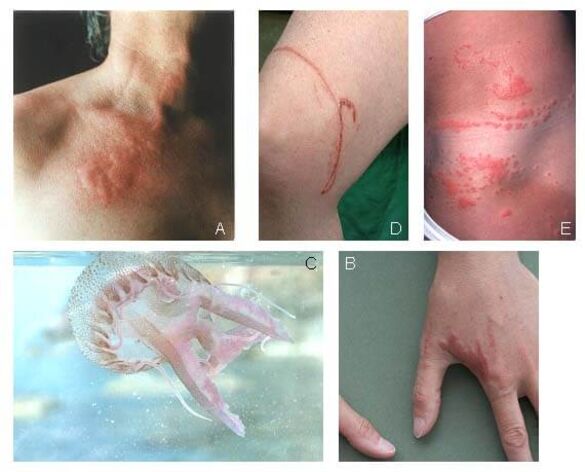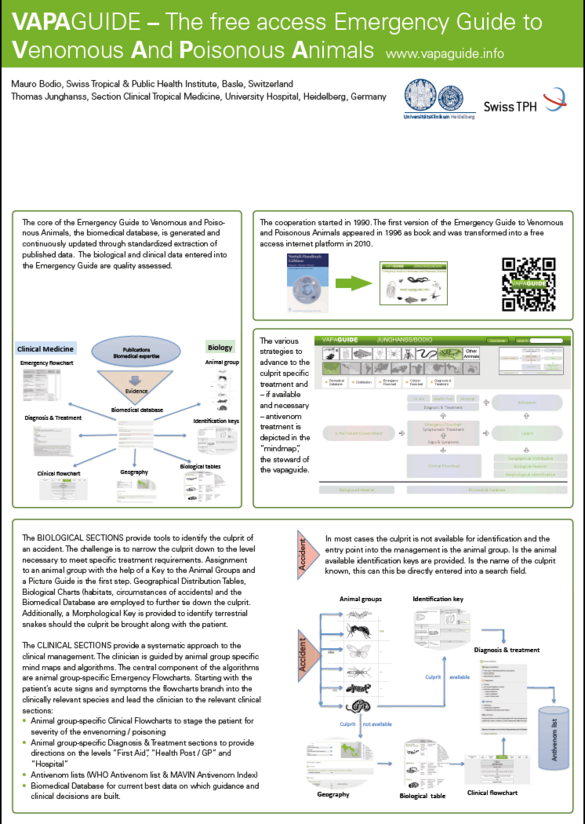Poisonous animal accident advice

The Section advises on poisonous animal accidents, a task that is performed in Europe by tropical institutes as well as toxicological advice centers.
Our Section is one of the few European institutions that has this expertise and conducts research in this field.
Thomas Junghanss has been given the technical patronage of the Swiss Antivenin Network ("Antivenin-CH"), which was founded in 2004.
Junghanss T, Bodio M (2006) Medically Important Venomous Animals: Biology, Prevention, First Aid, and Clinical Management. CID 43:1309-17 (out of print)
Venomous animal accidents are among the most underestimated and neglected health problems worldwide (so-called 'neglected diseases'). The digital version of the VAPAGuide (Venomous And Poisonous Animals Guide) is freely available on the Internet. It enables doctors and biologists worldwide to identify groups of animals and to diagnose and treat them using emergency and clinical flowcharts. The guide contains comprehensive biological and clinical data in the field of toxicology.
